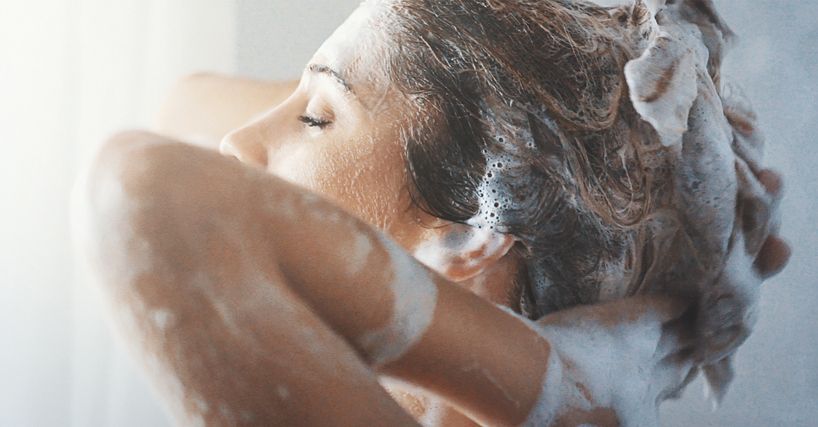
Author: Natalie Ng|Updated: 14 May 2025
If your crown hairline seems to be receding faster than the rest, you're not alone. The crown is often the first area where signs of hair thinning or hair loss show up, and it tends to progress quicker than other parts of the scalp. This has a lot to do with how hair follicles respond to hormonal changes, blood flow in the area, and certain daily habits. Your genetics also play a major role, especially if male pattern hair loss runs in the family. Even the natural shape of your crown can make thinning more noticeable. Keep reading to learn why crown hair loss often starts earlier and moves faster—and what you can do to help slow it down and support healthy hair growth.

DHT Sensitivity in Crown Hair Follicles
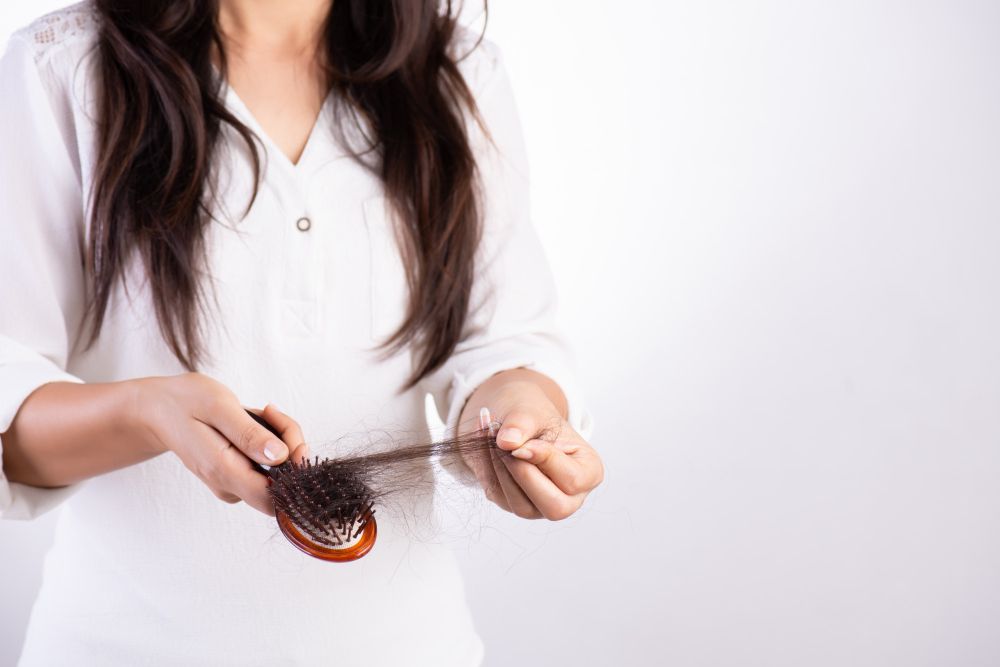
Hair loss starts with sensitivity, not hormone levels
Crown hair loss isn’t caused by having more DHT in that area. DHT levels are consistent across the scalp. The difference is how certain hair follicles respond to it.
Hair follicles in the crown are often more sensitive to DHT due to genetic factors. This makes them shrink faster, leading to thinner hair and a receding hairline at the top of your head. This process, known as miniaturisation, leads to reduced hair density and eventually creates a balding crown.
Early signs of crown-pattern loss
As hair follicles shrink, they grow thinner strands over shorter periods. This weakens the overall appearance of the crown, especially around natural swirl patterns called hair whorls. Over time, this can result in visible crown hair loss or a noticeable crown bald spot.
In many cases, this is one of the first signs of androgenetic alopecia, especially in men with a family history of male pattern baldness. Without early treatment, the crown area often continues to thin out faster than the rest of the scalp.

Importance of the Hair Growth Cycle in Crown Thinning
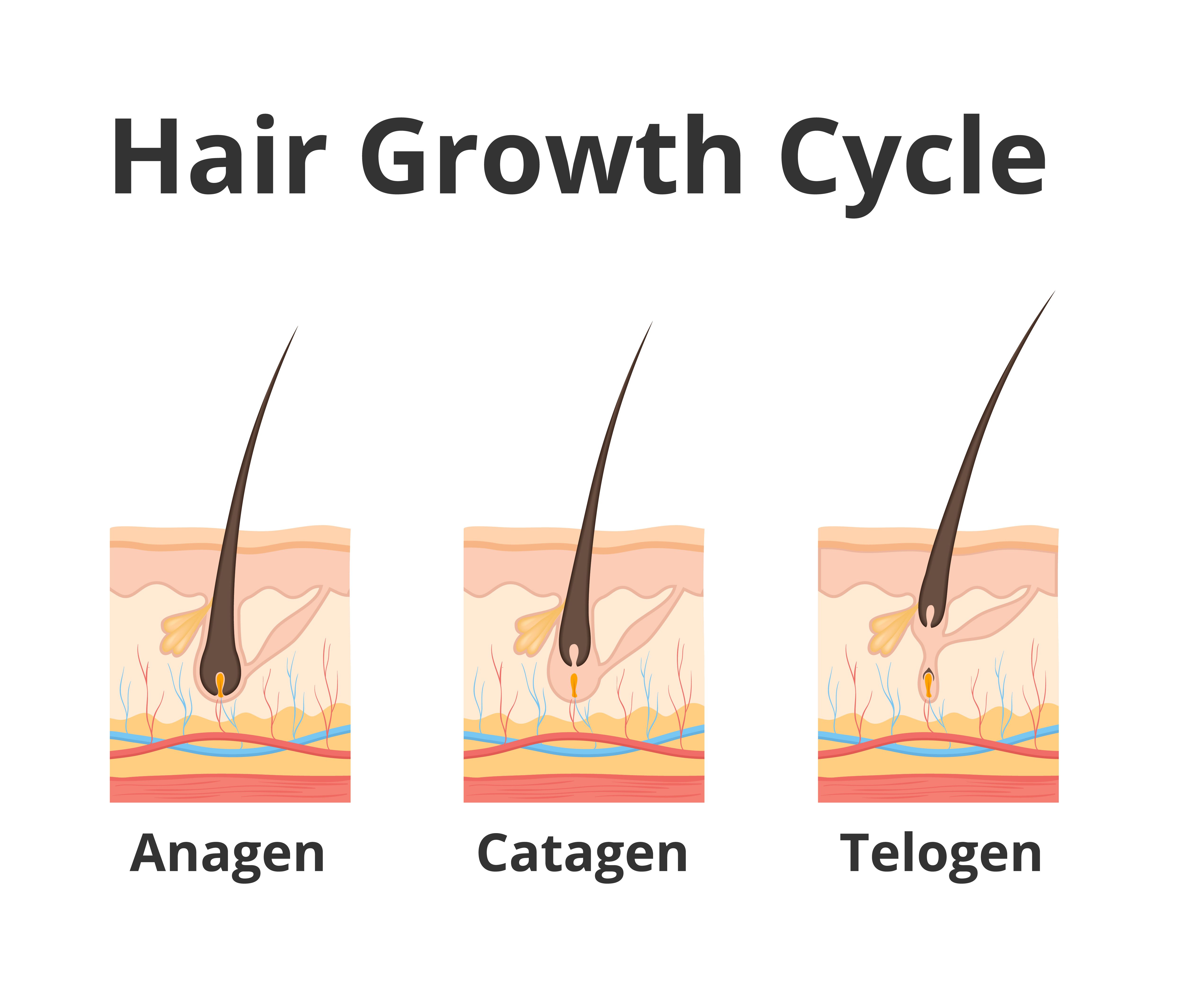
Disruptions to growth phases affect crown density
The hair growth cycle includes three key phases: anagen (growth), catagen (transition), and telogen (rest). Healthy hair follicles at the crown need a stable cycle to maintain density. But in cases of male pattern hair loss or androgenetic alopecia, this cycle is disrupted.
DHT shortens the anagen phase and extends the resting phase. As a result, crown follicles produce finer, shorter hairs or stop producing new hair entirely. Over time, this weakens the appearance of the crown area and contributes to crown balding.
Crown area is more sensitive to cycle disruptions
The crown has naturally higher exposure to hormonal and environmental stress. When the hair growth cycle is interrupted in this region, the impact becomes visible quickly. If you’re experiencing hair thinning at the crown, it often means your follicles are stuck in a longer resting phase, producing fewer new hairs.
Stabilising the hair growth cycle with treatment options like platelet rich plasma, oral medication, or professional medical advice can help support healthy hair follicles and encourage hair growth over time. Addressing the cycle itself, rather than just the symptoms, is important in managing long-term crown hair loss.
Read More
Book Now to Experience
F8 Hair Regrowth Treatment
1 Minute Self-Registration
Date should not be before minimal date

Reduced Blood Flow in the Crown Area
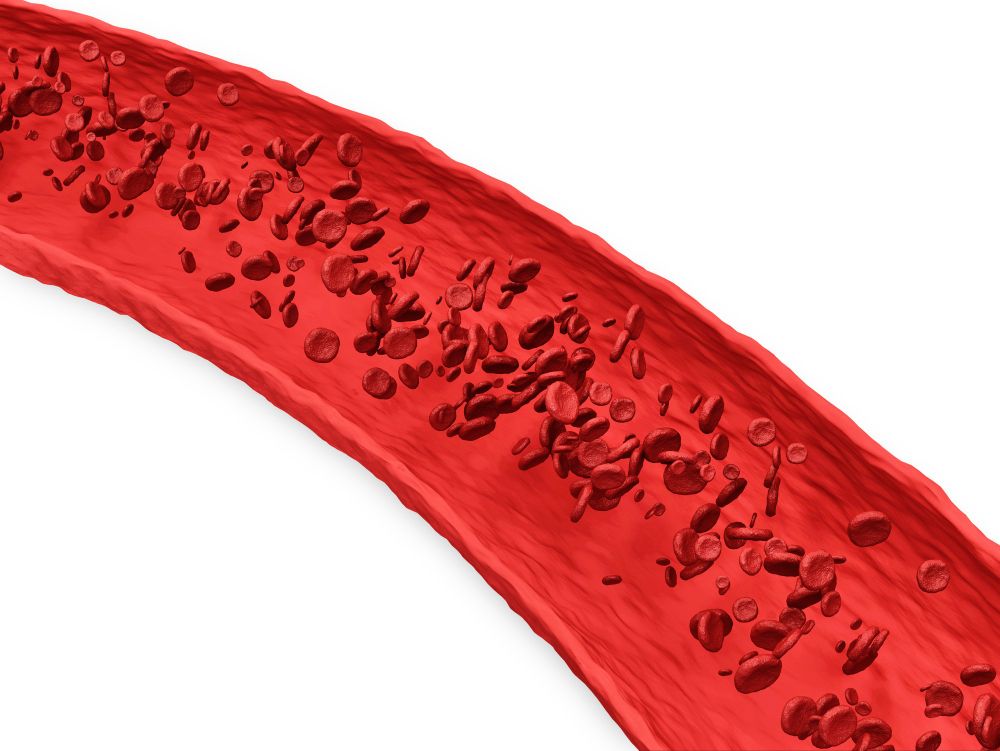
Blood flow decreases after hair thinning starts
Many people assume that poor blood circulation causes crown balding, but this isn’t the case. Research shows that reduced blood flow is actually a result of hair follicle miniaturisation, not the cause.
As male pattern baldness progresses, DHT-sensitive hair follicles in the crown begin to shrink. When this happens, the surrounding blood vessels also shrink because the follicles no longer require as much oxygen or nutrients. So even with good overall circulation, the thinning crown continues to lose density if the follicles are genetically prone to male pattern hair loss.
Why circulation-based treatments have limited effect
Treatments that aim to increase blood flow may help improve scalp condition, but they don’t directly prevent further hair loss in the crown area. If the root cause is DHT sensitivity or genetic factors, better circulation alone won't stop follicle miniaturisation.
This explains why methods like scalp massage or topical products that only focus on blood flow may support general scalp health but often don’t stop crown hair thinning or stimulate long-term hair regrowth.

Mechanical Stress From Daily Hair Practices
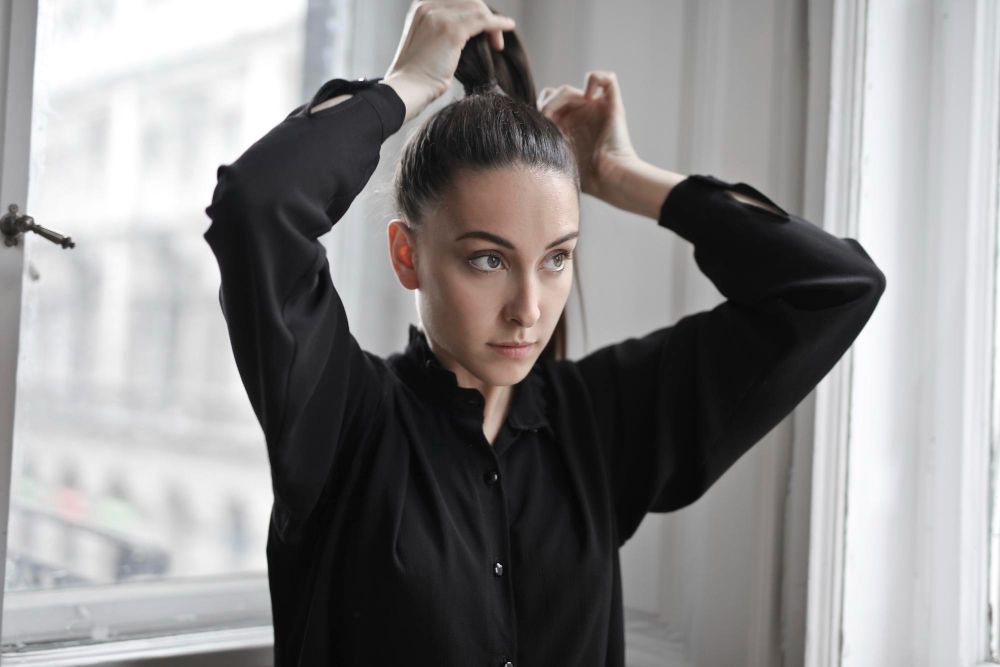
Impact of tight hairstyles on the crown
Daily styling habits can cause long-term stress on hair follicles, especially around the crown. Tight ponytails, braids, or buns pull at the same sections of hair repeatedly, putting pressure on the roots. Over time, this tension can lead to weaker strands and visible thinning in the crown area.
Even though hair follicles are built to handle normal movement, continuous tension can disrupt the hair growth cycle. In areas like the crown, where hair is already vulnerable due to genetic factors, this added stress can speed up hair thinning or lead to a receding crown hairline.
Brushing technique affects hair strength
Brushing is a part of basic hair care, but aggressive brushing can create friction that damages your crown area. This is especially true when hair is wet or tangled. Harsh strokes weaken the hair shaft, making breakage more likely and contributing to the appearance of crown thinning.
Using a wide-toothed comb or detangling brush helps prevent mechanical damage. Starting from the ends and working upward is gentler on the strands. To further protect your crown hair, avoid brushing wet hair and consider using a silk pillowcase to reduce overnight friction that can lead to breakage or hair fall.
These small adjustments in daily hair practices can help protect your crown area and support healthy hair growth in the long run.
Book Now to Experience
F8 Hair Regrowth Treatment
1 Minute Self-Registration
Date should not be before minimal date

UV Damage and Environmental Stress on the Crown
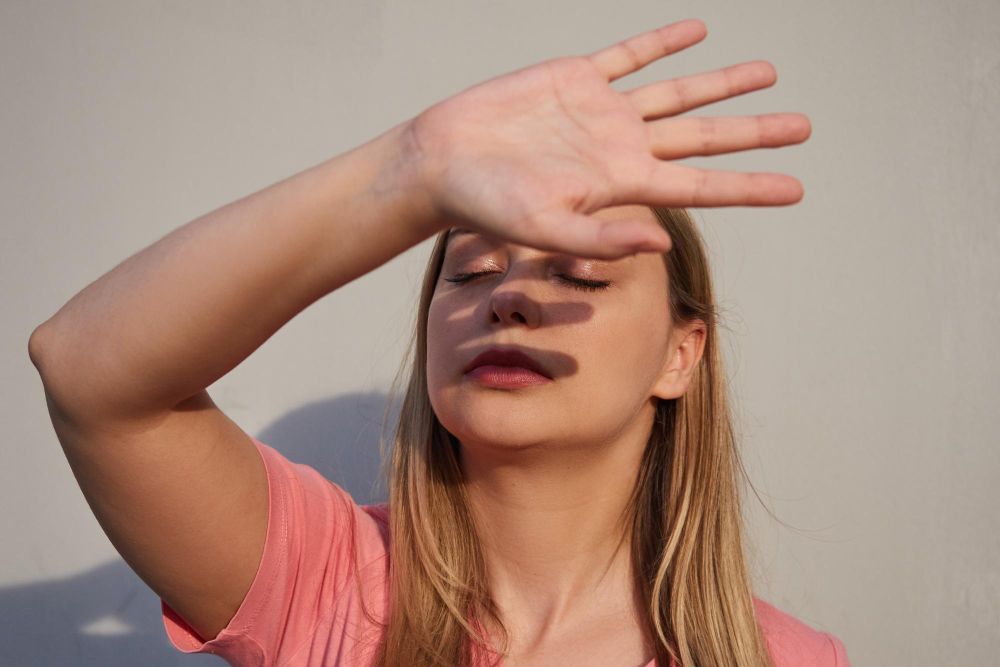
Sun exposure weakens hair follicles
The crown is often the most exposed part of your scalp. If you’re experiencing crown hair thinning or have a visible bald spot, UV radiation can directly hit the skin, increasing the risk of scalp damage and further hair loss.
Hair follicles in the exposed crown area are more likely to suffer under prolonged sun exposure. UV rays can damage the scalp’s surface, cause inflammation, and weaken healthy hair follicles. Over time, this can slow the hair growth cycle and make thinning more obvious, especially in areas already affected by male pattern baldness.
Scalp protection reduces environmental impact
If your crown hair is thinning, sunscreen isn't just for your face. Using scalp-safe SPF products helps protect vulnerable areas like the part line, thinning crown, and balding crown. Choose non-greasy formulas designed for the scalp to avoid clogging follicles while maintaining protection.
Wearing a hat or staying in the shade during peak UV hours can also reduce exposure. UV-protective sprays or powder sunscreens offer lightweight protection without affecting hair texture. Taking these steps helps promote healthy hair growth and prevents further damage to areas already showing early signs of hair loss.

Age-Related Changes in Scalp Structure
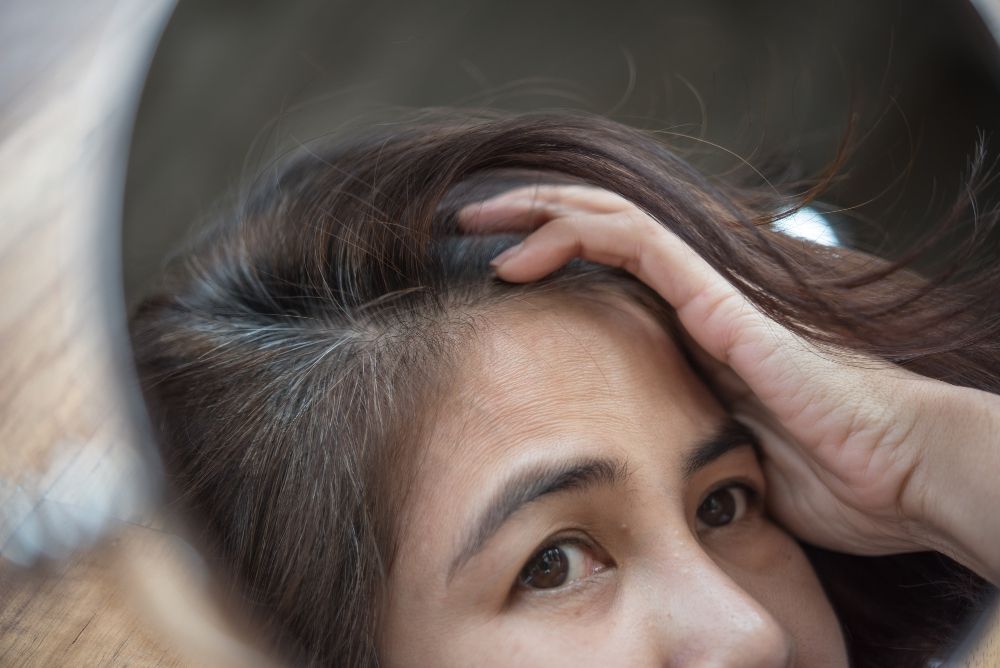
Changes beneath the surface that weaken hair follicles
With age, the scalp gradually loses strength and support. These changes affect the layers of skin that surround the hair follicles, especially in the crown area where male pattern hair loss often appears first.
The dermis becomes thinner, collagen levels drop, and elasticity fades. This reduces blood flow and weakens the structural support around each follicle. At the same time, sebaceous glands produce less oil, leaving the scalp drier and more prone to irritation. These conditions make follicles more reactive to hormonal changes, especially DHT.
Reduced activity in aging follicles
As these changes progress, the number of active follicles decreases. Those that remain tend to shrink and produce finer hair. In areas like the crown, this results in a gradual decline in hair density and a visible thinning crown.
This shift in scalp structure increases the risk of crown balding, especially in individuals with a genetic tendency toward male pattern baldness.
Book Now to Experience
F8 Hair Regrowth Treatment
1 Minute Self-Registration
Date should not be before minimal date

Sebum Build-Up and Miniaturisation of Crown Follicles
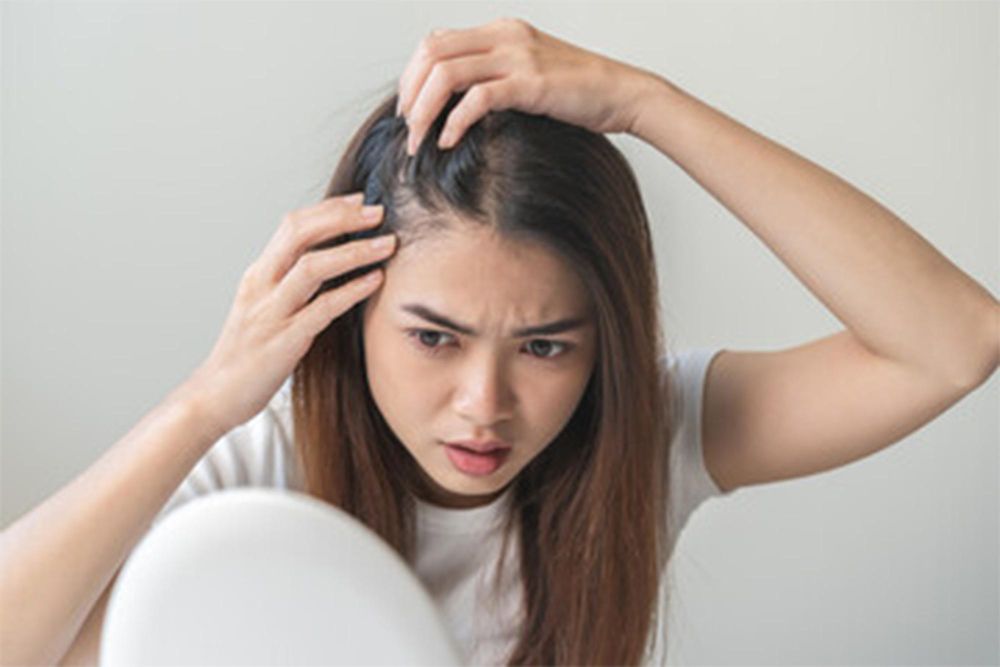
Oil accumulation disrupts healthy hair growth
Excess sebum can create scalp conditions that worsen crown hair loss. When the sebaceous glands produce too much oil, it builds up around the hair follicles. This traps dead skin and dirt, clogs the follicle openings, and creates a breeding ground for bacteria.
This environment weakens healthy hair follicles over time, especially at the crown where male pattern baldness already targets follicle density. Combined with DHT, sebum build-up accelerates miniaturisation, making hair strands thinner and more fragile.
Stages of follicle decline from sebum blockage
In the early stage, follicles may only show minor signs of blockage, resulting in slightly finer hair. As sebum and DHT continue to build up, follicles shrink further. Hair in the crown area becomes visibly thinner and more sparse.
In advanced stages, sebum completely blocks the follicles, leading to significant miniaturisation or even follicle dormancy. This is a common pattern in crown hair loss and contributes to the formation of a bald spot or the horseshoe pattern seen in advanced male pattern hair loss.

Genetic Influence on Crown Hair Loss
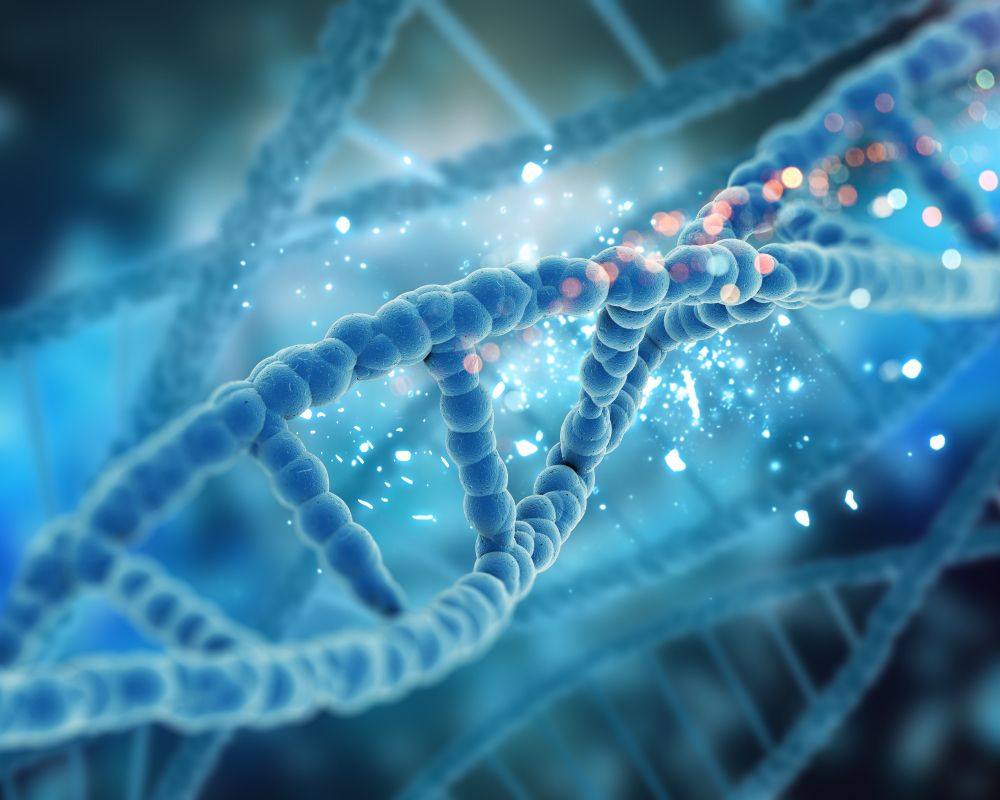
Inherited traits shape follicle sensitivity
Genetic factors are one of the strongest predictors of crown hair loss. Specific inherited traits affect how your hair follicles respond to hormones like DHT. If male pattern baldness runs in your family, especially on your maternal side, you're more likely to experience early thinning at the crown.
The androgen receptor (AR) gene, located on the X chromosome, plays a major role. Variations in this gene can increase the sensitivity of your crown hair follicles to DHT, accelerating the rate of miniaturisation even when hormone levels are normal.
Early signs and progression linked to family history
People with this genetic profile often notice signs of a receding crown hairline or a thinning crown earlier in life. The onset and severity of male pattern hair loss are largely influenced by these inherited patterns.
Over time, genetically sensitive follicles shrink faster, reducing hair density at the highest point of the scalp. This leads to more visible crown balding and may result in a crown bald spot or full vertex balding if left unmanaged. Genetic factors also influence how quickly treatments work and whether further hair loss can be slowed with intervention.
Book Now to Experience
F8 Hair Regrowth Treatment
1 Minute Self-Registration
Date should not be before minimal date

Everyday Tips to Protect Your Crown Hairline
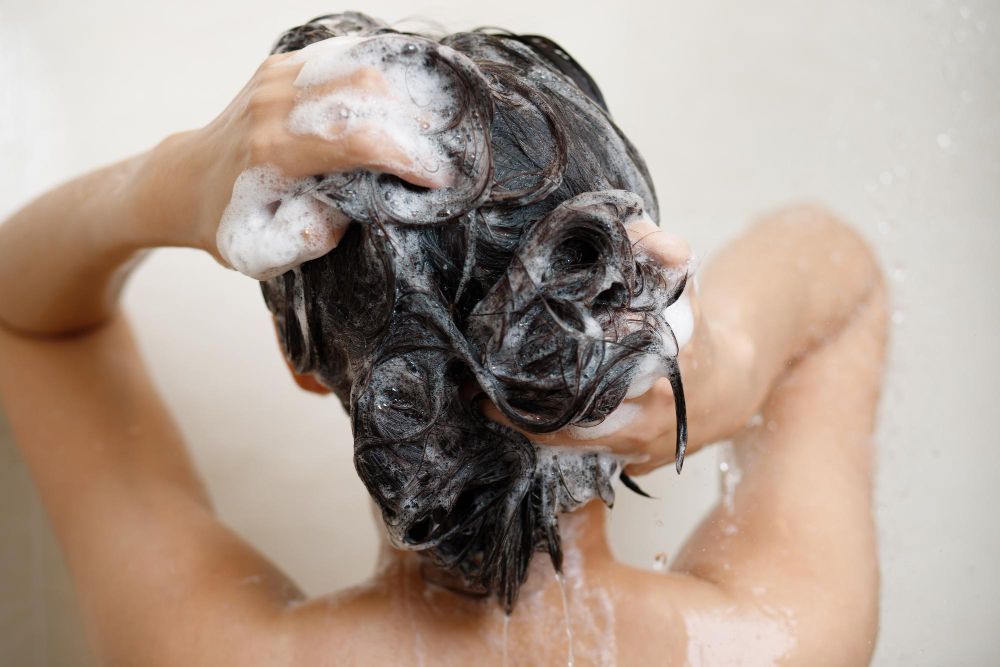
Simple habits that take pressure off your crown
If your crown’s been thinning, small changes in your routine can make a big difference over time. These aren’t miracle fixes, but they help take the pressure off your scalp and give your hair a better shot at staying healthy.
• Use a shampoo with scalp-clearing ingredients
Look for something with salicylic acid or ketoconazole. These help break down oil buildup and calm irritation, especially if your scalp gets greasy fast. Two or three times a week is usually enough — you don’t want to overdo it.
• Ditch the heavy conditioner
Thick, silicone-heavy products can clog up the follicles around your crown, which is the last thing thinning hair needs. Go for something light that keeps things moisturised without weighing your scalp down.
• Try a scalp serum with caffeine or peptides
These ingredients can help support blood flow and keep your follicles active. Apply a few drops right on your crown once a day — no need to overthink it.
• Use a soft brush, and take it easy
If your crown hair feels fragile, avoid brushes with stiff or sharp bristles. Go for a brush with rounded tips and detangle gently, starting at the ends and working your way up.
• Mix up your hairstyles
Always tying your hair in the same place pulls on the same spots — including your crown. If you tie it up often, switch positions and avoid tying it when it’s wet. Use soft, snag-free hair ties when you can.
• Protect your scalp in the sun
If your crown is thinning, UV rays hit it directly. Use a scalp-friendly sunscreen spray or powder before heading out, or throw on a breathable hat to protect the area.
• Dial down the heat
If you blow-dry, don’t blast the crown with high heat. Use the cool setting and keep the nozzle moving to avoid drying out the scalp or damaging fragile strands.
Extra things that help keep your scalp in good shape
• Sleep on a silk or satin pillowcase to cut down on friction
• Skip harsh scalp scrubs — once a week is more than enough if you use one
• Avoid tight hats or beanies that trap heat around your crown
• If you’re into DIY care, a microneedling roller (0.5 mm) used gently once or twice a week can help stimulate the area — just make sure it’s clean, and avoid it if your scalp’s irritated
These changes won’t reverse hair loss overnight, but they give your scalp a better environment to support healthy hair growth — and that’s key if you’re dealing with male pattern hair loss or a thinning crown.

F8 Hair Regrowth Treatment for a Thinning Crown Hairline
Targeted support for crown hair loss
If you’re dealing with a receding crown hairline or noticing the early signs of a balding crown, the F8 Hair Regrowth Treatment offers a non-invasive way to support hair and scalp health in this specific area. It’s designed to reactivate dormant hair follicles, improve scalp condition, and support blood flow — all of which are key in managing male pattern baldness and crown hair thinning.
How the F8 treatment works
The F8 treatment combines low-energy laser technology with a scalp-applied hair growth serum. The laser is gently applied across the scalp to stimulate hair papilla and strengthen the surrounding capillaries. This helps increase blood flow in areas like the vertex region, where follicles often become inactive during male pattern hair loss.
Once the scalp is primed, a growth serum is applied. The laser energy boosts absorption, allowing the serum to penetrate more effectively. It helps to clear blocked follicles, reduce excess sebum, and restore a balanced scalp environment. This combination creates ideal conditions to encourage hair growth and prevent further hair thinning at the crown.
Why it helps with crown hairline concerns
The crown area tends to respond slowly to topical products alone because of deeper follicle miniaturisation and reduced circulation. The F8 treatment addresses this by:
• Delivering laser energy to stimulate inactive follicles at the top of your head
• Strengthening the microcirculation around crown follicles to supply nutrients more efficiently
• Unclogging buildup and controlling scalp oil to create a healthier scalp for future hair regrowth
It’s especially helpful for those with crown hair loss linked to androgenetic alopecia, and it’s suitable for both men and women.
Safe and non-invasive
The treatment involves no surgery, no downtime, and no irritation for most users. Sessions are quick and comfortable, making it a practical option for those looking to promote healthy hair growth without medical procedures. A full plan typically spans 3 to 6 months, depending on your scalp condition and goals.
Book a consultation
If your crown hairline is thinning and you want to take action, the F8 Hair Regrowth Treatment may help you regain control and support healthier hair follicles over time. Book F8 to get a personalised scalp analysis and start your plan for visible results.
New Beauty's F8 Hair Regrowth TreatmentBook Now to Experience
F8 Hair Regrowth Treatment
1 Minute Self-Registration
Date should not be before minimal date
FAQ
Can a double crown affect how fast my crown hairline recedes?
Yes, people with a double crown may notice hair thinning more easily in that area. The natural pattern of hair whorls can make the scalp more visible, especially if hair density begins to drop. This doesn’t directly cause hair loss, but it can highlight early signs of male pattern baldness. Thinning around a double crown may appear more severe than it is, which is why regular monitoring and early care are important.
What is the difference between crown hair loss and a bald spot?
Crown hair loss usually starts as general thinning at the top of your head and may gradually spread outward. A bald spot, on the other hand, is a more defined patch where hair has completely stopped growing. This can be caused by male pattern hair loss, alopecia areata, or mechanical damage. If you’re unsure which one you’re experiencing, a scalp analysis can help confirm the underlying cause and guide treatment options.
Can crown balding grow back with natural methods?
In early stages of hair loss, some natural methods may help encourage hair growth and improve scalp health. These include scalp massage to increase blood flow, using caffeine or rosemary oil-based products, or improving your diet to support healthy hair follicles. However, if the crown area has experienced long-term follicle miniaturisation, natural methods alone may not be enough. Treatments like minoxidil or low-energy laser therapy are often needed to reactivate inactive follicles.
Is crown hair thinning reversible in men with male pattern baldness?
Crown hair thinning caused by androgenetic alopecia can often be slowed, and in some cases, partially reversed — especially when treated early. Treatments such as oral medication, topical solutions, and non-invasive therapies like F8 or platelet rich plasma can help stimulate hair regrowth. The degree of reversal depends on how advanced the thinning is and how responsive your follicles are to treatment.
Does stress affect the crown more than other areas of the scalp?
Stress-related hair loss, known as telogen effluvium, doesn’t target the crown specifically, but if that area is already thinning due to male pattern hair loss, stress may make it worse. Stress can push more follicles into the resting phase of the hair growth cycle, leading to increased shedding and a visible drop in density at the crown. Managing stress levels and maintaining a healthy scalp environment can help prevent further hair loss across all areas.
Recommended Articles
COPYRIGHT© NEW BEAUTY MANAGEMENT LIMITED 2025. ALL RIGHT RESERVED.

